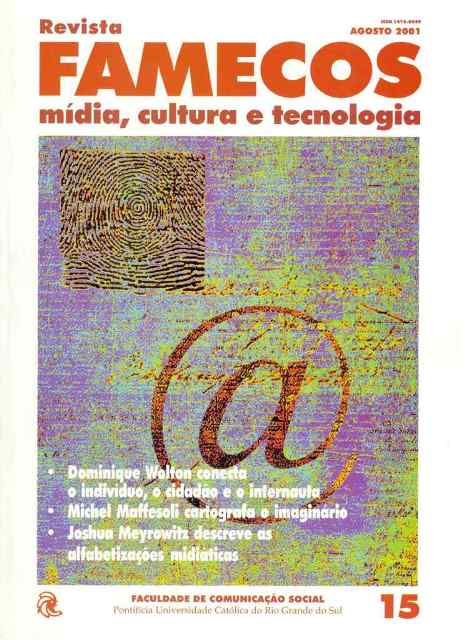As múltiplas alfabetizações midiáticas
DOI:
https://doi.org/10.15448/1980-3729.2001.15.3125Palavras-chave:
Tecnologia, gramática midiática, linguagemResumo
Existem pelo menos três tipos de alfabetizações midiáticas, cada uma delas ligada a uma diferente concepção do que nós pretendemos dizer com o termo mídia. A noção de que os mídia são condutores que transmitem mensagens aponta para a necessidade da alfabetização no conteúdo dos mídia. A idéia de que os mídia são diferentes linguagens sugere a necessidade de alfabetização numa gramática midiática, isto é, entender o significado das variáveis de produção dentro de cada meio. A concepção dos mídia como ambientes sugere a necessidade de se perceber a influência das características relativamente fixas de cada meio (alfabetização midiática), tanto nas comunicações individuais como nos processos sociais em geral. A alfabetização mediática, em particular, oferece algumas idéias especiais no que se refere as origens, problemas, e possibilidades de um movimento pela alfabetização midiática.Downloads
Referências
ALTHEIDE, D.L. Creating reality: How TV news disorts events. Beverly Hills, CA: Sage, 1976.
BARNOUW, E. The sponsor: Notes on a modern pontentate. New York: Oxford University Press, 1978.
GANS, H.J. Deciding what´s news. New York: Vintage, 1979.
HALLIN, D. We keep America on top of the world: Television journalism and the public sphere. New York: Routledge, 1994.
HERMAN, E. S. e CHOMSKY, N. Manufacturing consent : The political economy of the mass media. New York: Pantheon, 1988.
McLUHAN, M. Understanding media: The extensions of man. New York: Signet, 1964.
MANOFF, R.K. e SCHUDSON, M. (eds.) Reading the news. New York: Pantheon Books, 1986.MEYROWITZ, J. No sense of place: The impact of eletronic media on social behavior. New York: Oxford University Press, 1985.
______. Television and interpersonal behavior: Codes of percepcion and response. In G. Gumpert & R. R. Cathcart (Eds.), Inter/Media: Interpersonal communication in a media world (3rd. Ed., pp.253-272). New York: Oxford University Press, 1986.
______. Medium theory. In D. Crowley & D. Mitchell (Eds.)
Communication theory today (pp. 50-77). Cambridge, England: Polity Press, 1994.
PAPERT, S. The Children´s machine: Rethinking school in the age of the computer. New York: Basic Books, 1993.
SAVAN, L. The Sponsored life: Ads, TV, an Amarican culture. Philadelphia:Temple University Press, 1994.
SCHRAMM, W. Men, messages, and media: A look at human communication. New York: Harper & Row, 1973.
SCHUDSON, M. The power of news. Cambridge, MA: Harvard University Press, 1995.
SIGAL, L. Reporters and offi cials. Lexington, MA: Heath, 1973.
WEBSTER, K. e MEYROWITZ, J. Whose views make news? Cable in the classroom, p. 10-11, July/August, 1995.
ZETTL, H. Sight-sound-motion: Applied media aesthetics (2a ed.). Belmont, CA: Wadsworth, 1990.
Downloads
Publicado
Como Citar
Edição
Seção
Licença
Direitos Autorais
A submissão de originais para a Revista Famecos implica na transferência, pelos autores, dos direitos de publicação. Os direitos autorais para os artigos publicados nesta revista são do autor, com direitos da revista sobre a primeira publicação. Os autores somente poderão utilizar os mesmos resultados em outras publicações indicando claramente a Revista Famecos como o meio da publicação original.
Licença Creative Commons
Exceto onde especificado diferentemente, aplicam-se à matéria publicada neste periódico os termos de uma licença Creative Commons Atribuição 4.0 Internacional, que permite o uso irrestrito, a distribuição e a reprodução em qualquer meio desde que a publicação original seja corretamente citada.






